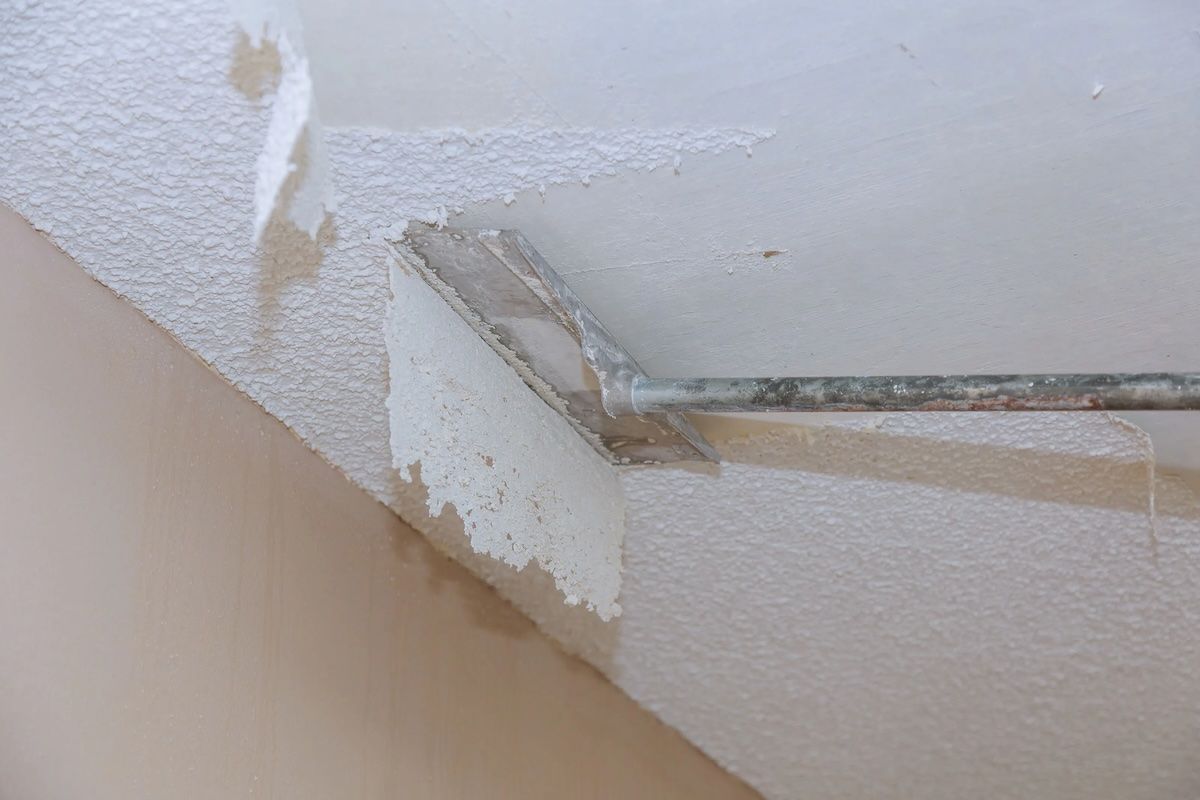How to Buy a Rental Property with Little or No Money Down?
Coming up with a down payment for a rental property can be tough, especially if you’re a new investor without much cash. Often, you need 5-20% down, which could be tens of thousands of dollars or more. If it’s a rental, you may also face issues getting financing if you have an existing mortgaged property.
But what if you could buy rental properties with little or no money down? There are creative ways to invest in real estate even if you don’t have much cash upfront. Some methods come with risks if not done right.
In this guide, we’ll provide several ideas to help new investors buy rental properties on a budget. With smart planning and thinking outside the box, first-timers can break into real estate investing without much capital with these strategies.
1. House Hacking
House hacking is a creative real estate investing strategy that allows you to turn your primary residence into a rental property. It is a real estate practice that takes cues from decades past while adding a modern spin.
Traditional house hacking is buying a multifamily property, living in one unit, and renting out the others so that the tenants pay the owner’s mortgage and the owner builds equity while maintaining the property. It is an easy first step into being a landlord while building equity through real estate.
Before the rise of sprawling suburbs, urban multifamily homes were common for city dwellers. Retired owners would rent units to younger tenants, or parents would purchase duplexes and triplexes so married children could live nearby. It was a more affordable path to property ownership and long-term wealth.
Today’s smart investors are revamping this old-school approach by house hacking with a contemporary edge. By owning a rental property that you live in, you can collect rental income from tenants while also having some of the benefits of homeownership, like the ability to renovate and add value at will.
Why House Hack?
In an era where housing costs are rising faster than incomes, house hacking allows you to create a source of passive income and helps you build equity faster. For those whose priority is not to pay down their mortgage quickly, it’s a creative way to reduce expenses by generating rental income. For others, house hacking marks the first step to becoming a full-time real estate investor.
House hacking offers several advantages:
- Produce extra income. Rental payments from tenants help cover your housing costs and provide additional income. This extra cash flow can be invested or used to pay other expenses.
- Pay down your mortgage faster. If your top priority is rapidly building home equity, the rental income can accelerate how quickly you pay off the mortgage. Each month, the tenants’ payment helps chip away at your loan principal.
- Get property management experience. House hacking offers hands-on practice as a landlord, including tasks like screening tenants, collecting rent, and handling maintenance issues. This experience prepares you to scale up to a larger rental portfolio.
- Tax benefits. With an income-producing rental, you may be able to write off expenses like property repairs and maintenance on your taxes. Always consult a tax professional to understand deductions.
- Easier to finance. Struggling to get approved for a mortgage on your own? Buying a multifamily property and generating rental income can improve loan qualification and affordability.
- More flexibility. If you need to relocate, renting out your portion of a multifamily home is typically easier than finding tenants for an entire single-family house.
- Reduce investment risk. House hacking allows you to dip your toes into rental property management while living on-site. This hands-on experience comes with less risk than buying a separate investment property.
House hacking is about making your property work harder for you. While you build home equity as a resident owner, you also produce income as a landlord. With strategic thinking, your home can serve as the launch pad for growing your portfolio over time. The equity you build now can be leveraged to buy more rental properties and assets in the future.
Risks of House Hacking
House hacking isn’t for everyone. The dream of home ownership usually doesn’t come with shared walls or a shared yard. But on top of that, buyers need to consider if they are ready to take on:
- Property management. Generating income through house hacking is typically passive, but there will be times when you need to be actively involved with your tenants and investment. There may be occasions when you will need to address maintenance requests or actively oversee the leasing of your property. Nevertheless, it is worth noting that you have the alternative of engaging a property manager or a professional property management firm to handle these responsibilities on your behalf. However, property management services come at a cost, which will eat into your profits.
- Additional financial risk. Rental income isn’t guaranteed. Costs like repairs and vacancies can impact your bottom line.
- Property damage. Irresponsible tenants can cause excessive wear and tear or damage. Factor in repairs, especially before re-renting units.
- Tenant issues. Conflicts over noise, cleanliness, or other problems can arise when cohabiting on a property.
- Vacancy. If you can’t find qualified tenants, units will sit empty without generating income. Vacancy costs add up over time.
House hackers need professional yet cordial relationships with their tenants. The shared space also requires compromises that traditional single-family homeowners do not face. Weigh your tolerance for these disruptions. House hacking isn’t a completely passive investment, so consider if you are ready for the hands-on work required.
2. Home Equity Line of Credit (HELOC)
Did you know you can leverage your existing home equity to purchase a rental property with little to no money out of your pocket? Yes, you can do this by using a home equity line of credit or HELOC.
A home equity line of credit (HELOC) is a revolving line of credit that allows homeowners to borrow against the equity in their home.
A HELOC functions similarly to a credit card, granting homeowners access to approved borrowing limits using home equity as collateral. You can draw against your HELOC as needed up to the set limit. Compared to alternatives, HELOCs frequently offer lower interest rates.
The interest paid may be tax deductible if used for real estate investing, but consult a tax professional to be sure. The flexibility of approved HELOC limits provides a useful and affordable way to leverage home equity.
Qualification Requirements and Costs
Before applying for a HELOC, first check the eligibility and underwriting requirements. Lenders will evaluate multiple factors to determine if you qualify and how much you can borrow. To get approved for a HELOC, you typically need:
- At least 15-20% home equity.
- A credit score in the mid-600s.
- Debt-to-income ratio under 43%.
- Steady income.
- Solid payment history.
An appraisal is required to assess home value and equity. HELOC costs include application and appraisal fees and maybe an annual fee. But closing costs are often lower than other loans.
3. Lease-to-Own
Lease-to-own agreements give hopeful first-time homebuyers a chance to rent and eventually buy a home, even if they can’t yet qualify for a mortgage. These arrangements allow aspiring owners to move into a property, work on boosting their credit and savings, and purchase the home once they are financially ready.
Another name for a lease-to-own agreement is a rent-to-own agreement or lease-option agreement — an arrangement that allows tenants to rent a property with the option to buy it at the end of the lease term. It’s a practical option for buyers who might not qualify for a mortgage, often because they have issues with their credit or are self-employed.
For buyers faced with barriers to a traditional loan, it can provide a critical steppingstone to homeownership.
Two Main Types of Lease-to-Own Agreements
There are two main types of lease-to-own agreements:
- Lease Option. The tenant has the option, but not the obligation, to purchase the property at the end of the lease term; they can choose not to buy, and the contract will simply expire.
- Lease Purchase. The tenant must buy the property at the end of the lease term — it’s a committed purchase, not just an option.
How a Lease-to-Own Benefits Investors and Tenants
Lease-to-own agreements have several advantages for both property investors/sellers and tenants/buyers when structured properly.
It provides some key advantages for the investor or seller of a property, which include:
- An alternative exit strategy if the home has historically been difficult to sell.
- An interim rental income while the buyer prepares to purchase the home.
- Less day-to-day property management if the tenant maintains the home well.
Benefits for the tenants include:
- Allowing time to improve their financial situation and credit score to better qualify for a mortgage in the future.
- Locking in the purchase price now, even if the market rises later. This provides price certainty.
- Giving flexibility to walk away at the end if they can’t secure financing. The buyer isn’t obligated to purchase.
- Allowing them to test out the home before purchasing it. The tenant can evaluate the property.
However, tenants should also weigh the risks, like forfeiting any non-refundable fees if they opt out of the purchase. Loss of money aside, they may be disappointed if they put time and care into a home they ultimately can’t buy.
4. Seller Financing
Seller financing, or owner financing, is a real estate transaction method where the seller provides credit to the buyer to facilitate the purchase of the property. It’s one of the most popular ways for investors to purchase property with no money upfront.
How Does Seller Financing Work?
Under a seller finance structure, the property seller finances some or all of the purchase price of the investment property. Essentially, the seller acts as the bank until the buyer pays off the loan or gets other financing. They extend credit to cover the purchase price beyond any down payment. The buyer then makes payments to the seller per a promissory note outlining the loan’s terms — interest rate, repayment schedule, consequences of default, etc.
Sellers usually run credit checks and reject risky buyers. These deals typically involve short-term loans with monthly payments. A typical seller financing loan has a 30-year amortization to keep payments affordable but with a balloon payment due in 5-10 years. This allows time for the property to build equity and the buyer to improve their finances and obtain a conventional loan.
If you want to purchase a property with no money down, some sellers might be open to 100% seller financing. Savvy investors accomplish this type of investing by:
- Finding a home in disrepair.
- Making an offer using 100% seller financing.
- Making repairs and completing renovations to add value and increase the property’s rental rate.
- Leasing out the property at market rent.
- Refinancing to a conventional loan using the equity built in the home and rental income.
Pros and Cons of Seller Financing for Buyers and Sellers
Seller financing offers an alternative path to transacting real estate with no money down, but both parties must carefully weigh the risks and rewards.
The pros of seller financing for buyers include:
- Faster closings without waiting for mortgage approvals.
- Lower closing costs — zero lender and appraisal fees.
- Flexible down payment options.
- Expanded purchasing power for those unable to qualify for a traditional mortgage.
However, potential cons for buyers are:
- Higher interest rates compared to traditional bank loans.
- The pressure of balloon payments after a few years – 5-10 years.
- There is less protection for buyers if the seller initiates foreclosure due to lack of payment.
Advantages for seller/owner include:
- Ability to sell the property faster.
- Potential to earn higher returns compared to other investments.
- Possibility of retaining the title as collateral until the loan is fully repaid
- Avoiding repairs often required by banks to approve financing.
But risks to sellers include:
- Buyer defaulting on loan payments.
- Limitations under Dodd-Frank regulations.
- Expenses if forced to foreclose and resell the property.
5. Hard or Gap Money Lenders
Hard money loans (also called gap money) are short-term financing options. They are often used to purchase property that needs considerable repair. Most traditional lenders won’t finance an extremely distressed property because they perceive it to be too high of a risk.
Loans from hard money lenders can be an excellent way to secure great deals on the property with no money down; however, they need to be used as a short-term tool and not a long-term solution.
Be Prepared for Higher Interest Rates and Costs
The main downside of hard money loans is that they come with higher costs and substantially higher interest rates compared to conventional financing, often up to 20%. On top of the high rates, lenders charge upfront fees of 2-5% of the loan amount.
The higher rates and costs reflect the increased risk taken on by the hard money lender. Make sure to factor these expenses into your profit projections when using hard money financing.
These loans serve as a quick source of capital for a short period, either for the rehab or until you secure take-out financing at a lower cost.
Example of How a Hard Money Loan Works for Investors
Let’s look at an example of how a hard money loan can work for investors.
An investor identifies an opportunity in a distressed property in a desirable neighborhood, listed significantly below market value due. Traditional financing options are off the table due to the property’s distressed state, but the investor recognizes the potential for substantial returns in equity and the rental market. In this situation, a hard money loan can provide the needed funds to both acquire and rehabilitate the property swiftly despite carrying a higher interest rate than conventional loans. The investor’s goal is to add value to the property, turning it into a lucrative rental unit, thus turning a seeming liability into a valuable asset.
The investor obtains a hard money loan with a jaw-dropping 10% interest rate. Post-renovation, the investor, now with a revitalized and rentable property, seeks a tenant and successfully establishes a consistent rental income. This not only stabilizes the investment but also positions the property for refinancing through a conventional loan. After a seasoning period, typically six to twelve months, and with a solid rental history to mitigate risk, the investor refinances to a conventional mortgage with a much lower interest rate.
With the refinance completed, not only has the investor secured a rental property at below-market value, but their renovations have added equity, and they now have a positive cash-flowing investment property.
While hard money loans carry a higher cost burden, they help unlock investment opportunities that would otherwise be inaccessible due to initial financial barriers.
6. Assume a Mortgage
An assumable mortgage means that a buyer can take over a seller’s existing mortgage instead of obtaining an entirely new one. This route offers major benefits when interest rates are high.
How to Assume a Mortgage
If you are interested in assuming a mortgage, start by asking sellers if their loan is assumable. Many government-backed loans are assumable, but conventional loans often are not.
Just because you’re assuming a loan doesn’t mean you don’t have to meet lender qualifications. You’ll have to complete a loan application, provide financial documents, and go through underwriting with the existing lender. This ensures you qualify, and the lender approves, releasing the seller from liability.
A benefit of assuming a loan is that closing costs are lower than a new purchase mortgage. However, you’ll still need cash to cover the seller’s home equity.
Benefits of Assuming a Mortgage in a High-Interest Rate Environment
When interest rates are high, assuming a mortgage can be an excellent way to get financing on a property without paying the market’s high interest rate. When assuming a mortgage, the buyer maintains the current loan terms.
So, suppose you are purchasing a property that was originally purchased five years ago and assuming the mortgage. In that case, you’ll benefit from a lower rate rather than today’s high-interest rate environment.
Assuming a mortgage can offer several financial advantages:
- Lower interest rates.
- Lower closing costs.
- No appraisal is needed.
- Less debt.
By assuming an existing mortgage, you get to take over an existing low-rate mortgage and avoid the high costs of a new mortgage. For buyers, mortgage assumptions offer major financial benefits, especially when rates have risen significantly.
7. Partnerships/Investors
Do you have a skill for finding great deals or renovating homes but don’t necessarily have the financial resources to purchase property on your own? In these circumstances, forming partnerships with other investors can get you on the road to real estate investing.
Forming partnerships with other investors can expand your buying power if you lack sufficient funds or expertise yourself. By pooling money and skills, a group may purchase larger properties than individuals can alone. If you don’t have any funds for a down payment, look for partners who want to be passive in an investment renovation and offer your construction skills and time as your contribution to an investment property.
Alternatively, if you know how to find great deals but don’t have the capital to invest, look for passive partners with whom you can engage as investors. This strategy has recently grown in popularity, leading to a boom in the real estate syndication industry.
While partnerships can be profitable arrangements, it’s critical that you thoroughly outline all terms upfront in formal agreements to prevent misunderstandings. A proper structure takes work initially, but it allows those with limited resources to enter real estate investing through trusted partnerships.
7. Credit Cards
Credit cards can be leveraged to buy real estate through a cash advance or by using them to pay for real estate-related expenses. However, you cannot use a credit card to buy real property outright (meaning they can’t replace a mortgage).
Real estate investors may see credit cards as a fast way to get capital, with perks like rewards points, too, but, as with other financing options, they have associated risk. Risks include high interest and potential borrowing limits that need careful consideration.
So, before funding an investment with a card, make sure your limit fully covers the purchase and that you are confident that you can pay off the balance quickly.
Getting Started Investing in Rentals
Before buying rental properties with little to no money down, evaluate the opportunity thoroughly – each financing method you’re considering for your real estate deal carries risks and rewards. Remember, higher risk does not guarantee higher rewards, so ensure the juice is worth the squeeze.
For new investors with limited funds, creative financing strategies can make purchasing your first rental property possible. The key to getting started is thoroughly assessing risks, cash flow, and costs. While creative financing opens doors, diligent planning and risk assessment are essential.
Connect with a top-rated local real estate agent from FastExpert’s extensive directory of professionals to guide you in tailoring a smart investment strategy. Start your real estate investment journey off on the right foot with help from experienced real estate agents who will help you find great deals. With the right mix of creativity and an expert agent in your corner, the path to rental property ownership is achievable, even on a limited budget. Connect with a qualified local agent today.
Find the Cheapest Rent:
>>Cheapest Cities to Rent in Florida





